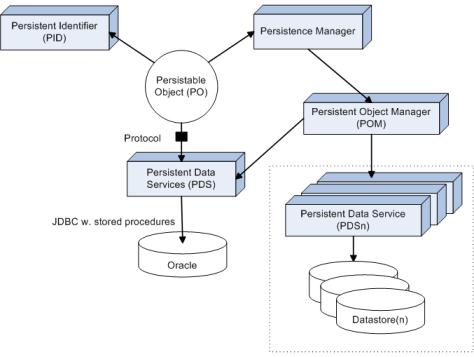Storing File Content as Large Objects
Information managed by Windchill exists either as pure structured business information (attributes of objects and relationships) or as unstructured information created by applications in the form of external files utilizing either standard or proprietary data formats. The following figure illustrates ORDBMS management of structured and unstructured attributes.
Structured data is stored using normal relational techniques (tables), and unstructured data is stored as objects. Storing file content in the database obviously results in large databases and would cause performance problems with traditional RDBMS technology. However, new ORDBMS technologies are designed to enable this approach.
The runtime architecture for persistence is shown in the following figure. Every object that implements the persistable interface is assigned a persistence identifier. The PersistenceManager interface identifies the set of methods that applications use to manage the persistent state of their business objects. While all of the methods declared by this interface execute on the server, they are accessible to client applications through a helper class.
The Persistent Object Manager brokers persistence requests and forwards them to a PersistentDataService to handle the actual persistence operation. The protocol used to pass objects back and forth to the database is a combination of introspection and JDBC calls to stored procedures. Introspection is used to bind the attributes to stored procedure variables.


